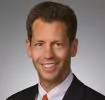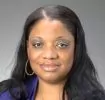On November 9, 2009, the U.S. Supreme Court (Court) heard oral arguments in Bilski v. Kappos, No. 08-964, which is an appeal from the Federal Circuit's decision in In re Bilski, 545 F.3d 943 (Fed. Cir. 2008). The Court's decision in this case could change the scope of patent eligible subject matter.
The Patent Act states that patents may be obtained for "any new and useful process, machine, manufacture, or composition of matter, or any new and useful improvement thereof ... " 35 U.S.C. § 101. This case addresses the question of what sorts of processes are patent eligible. While the Court has famously said that Congress intended patent eligible subject matter to "include anything under the sun that is made by man," Diamond v. Chakrabarty, 447 U.S. 303, 309 (1980), the Court also has held that laws of nature, natural phenomena, and abstract ideas are not patent eligible processes. Bilski, 545 F.3d at 952 (citing cases).
The decision on appeal from the Federal Circuit distilled the various Court decisions addressing whether particular processes were patent eligible into a two-part test. According to the Federal Circuit, a process is patent eligible if it either (1) is tied to a particular machine or apparatus, or (2) transforms a particular article into a different state or thing. Bilski, 545 F.3d at 954. The Federal Circuit applied this "machine or transformation" test to Bilski's claimed method for managing consumption risk in commodity markets. Because the claimed methods were neither tied to a particular machine nor transformed any article to a different state or thing, they were not patent eligible. Bilski, 954 F.3d at 963-64.
Bilski appealed to the Court, which agreed to hear the case on June 1, 2009. Because the machine or transformation test has implications for the patentability of a wide range of processes, including business methods and software, this case has attracted a great deal of attention, including 65 amicus briefs.
The Parties' Positions
In its briefing before the Court, Bilski argued that the machine or transformation test was unduly narrow. Bilski urged the Court to adopt a test that would allow patents on processes so long as they represented a practical application of an otherwise unpatentable law of nature, natural phenomenon, or algorithm.
The USPTO, in contrast, argued for affirmance of the Federal Circuit's machine or transformation test, and argued that the patent act does not allow for patenting methods of organizing human activity.
Supreme Court Argument
In the hearing, most of the Court justices expressed skepticism of Bilski's proposed broad standard for process patents, suggesting that there was no basis in either the framers' intent, past legal precedent, or historic practice to allow patenting of methods from almost every business. Instead, the justices' questions and comments suggested that the Court may be considering a limitation on pure business method patents. The Court challenged Bilski's contention that such patents should be allowed based on their importance to the modern information-based economy. Justice Ginsburg observed that European patent systems did not allow pure business method patents, while Justice Scalia noted as an example that no one in previous eras had patented a method for horse training, despite the past importance of horses to the U.S. economy.
In contrast to Bilski's expansive standard, the USPTO argued that the term "process," as applied to patents, should not apply to every "human endeavor" and that past cases have held process patents eligible only when they have ties to a machine, thus supporting the machine or transformation test. For purposes of the questioning, the bench repeatedly attempted to clarify whether the use of software to perform a method on a computer constituted a patent eligible " transformation," indicating that perhaps the computer was itself a new machine (the Court did not address the special-purpose computer concept directly). Several justices raised the point that attempts to broadly limit business method patents must be considered together with understanding what must be tied to a machine, such as a computer, as just reciting a machine may then make those business methods patent eligible again.
Alternatively, Justices Alito, Ginsburg, and Sotomayor suggested that the Bilski case could be decided on narrow grounds; for example on the basis that the hedge fund method in question was an unpatentable abstract idea, or was anticipated or obvious under the prior art. Counsel for the USPTO observed that such a narrow decision would not raise potentially difficult issues concerning software or medical device patentability, but noted that a narrow decision also might not provide a firm enough endorsement of the machine or transformation test to enable the Federal Circuit to develop the test going forward.
The argument also was notable as being the first appearance of Justice Sotomayor on the bench in a major patent case. Justice Sotomayor's many incisive questions illustrated her past experience as an intellectual property litigator and her knowledge of patent law. However, she appeared to join her fellow justices in questioning Bilski's expansive concept of patentability, indicating that her background has not necessarily made her as "patent-friendly" as some constituents may have hoped.
Conclusion
While predicting the Court's decision based on the questions asked at oral argument can be risky, it seems likely that pure business method claims having no other tie will face difficulties as to patent eligible subject matter. It is an open question whether the Court will affirm the Federal Circuit's machine or transformation test or adopt a new, and likely narrower still, definition of a eligible process.
The content of this article is intended to provide a general guide to the subject matter. Specialist advice should be sought about your specific circumstances.




